
|
|
#1 |
|
Участник
|
powerobjects: Data Management & Integration Using Data Entities – Part 1
Источник: https://www.powerobjects.com/2017/11...tities-part-1/
============== 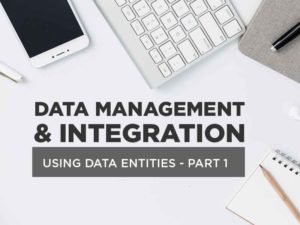 Today we will review data management and integration using Data Entities in the Dynamics 365 for Finance and Operations application. Modern enterprise organizations have interconnected devices with systems and processes that collaborate with each other and users across business functions. This helps provide an exceptional user experience and supplies the data and information to ensure the correct business decisions are being made while aiding productivity – that is where integration plays a vital role. Dynamics 365 for Finance and Operations offers both real time (synchronous) and batch driven (asynchronous) data management and integration options depending upon user requirements. Most commonly, Data Entities are used for data management and integration. A data entity provides conceptual abstraction and encapsulation of underlying table schemas to represent key data concepts and functionalities These Data Entities are grouped into five types that are based on their functions and the type of data that they provide. Data Entity TypeFeatures Example Parameter BasedPre-requisite setup data specific to industry and or business functional and deployment parameters for modules. Consists of tables that contain only one record where columns are value for settings.AP / AR / GL / Inv. Setups, etc.Reference BasedSetup reference data specific to industry or business processes in small quantities to enable transactions.Units, dimensions, and tax group / codes, etc.MasterLarge amounts of data required for business operations that are critical for transactionsCustomers, Vendors etc. DocumentsBusiness Operational Data having complex structures including header and line items.Sales Order, Purchase Order, Journals, etc.TransactionOperational transactional data such as posted transactions which are considered as record.Pending Invoices How to build a data entity in Dynamics 365 for Finance & Operations Option 1: building an entity by using a wizard The easiest way to build an entity is to start the Wizard, add a new item of type Data entity to the project. When building an entity, start with a root data source. However, you can add additional data sources either manually by adding new data sources or by selecting a surrogate foreign key field in the root data source to automatically expand the required data sources. When the Wizard is completed it creates following:
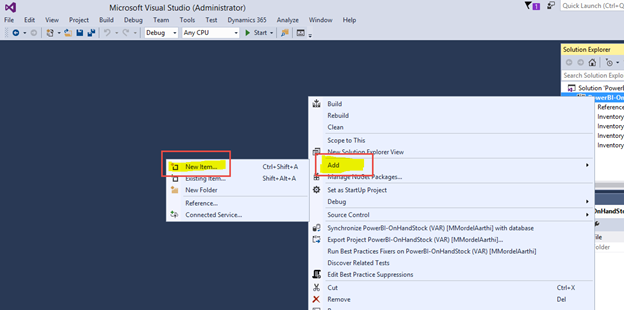 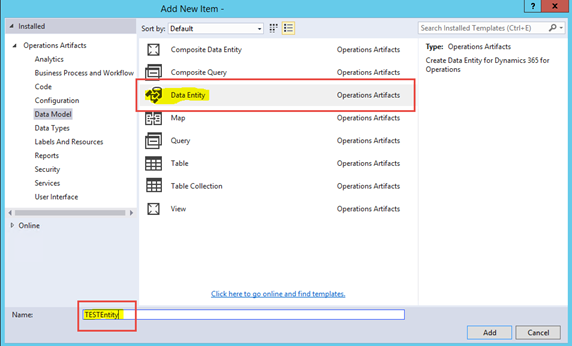 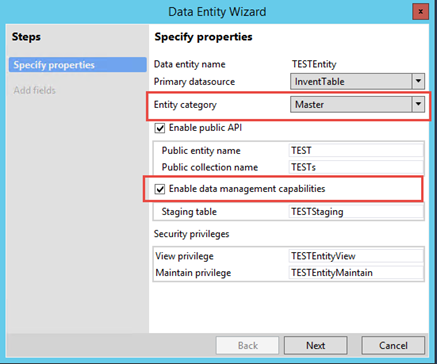 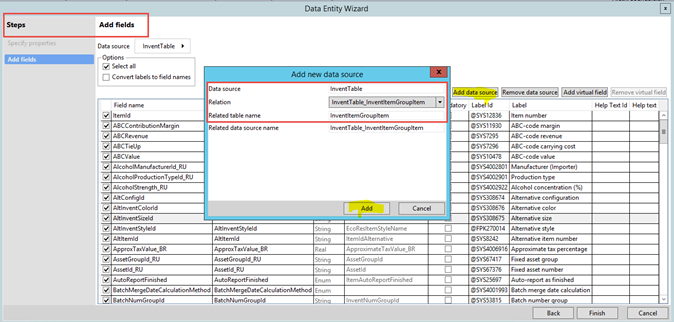 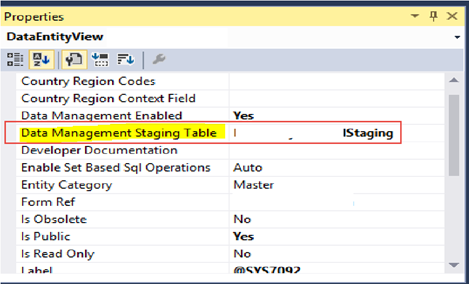 Option 2: Building an entity from a table Developers can quickly create an entity from a table, and then customize the properties, data sources, and fields later. Right-click the table, and then select Addins > Create data entity. 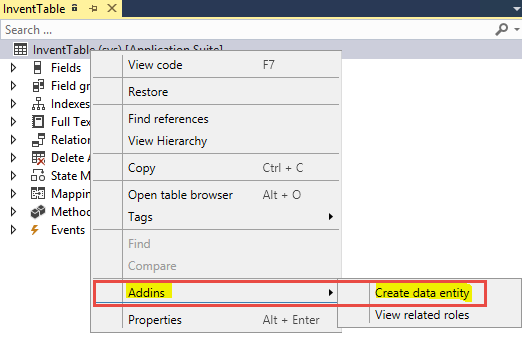 Output:  In previous versions of Microsoft Dynamics AX, there were multiple ways to manage data, such as Microsoft Excel Add-ins, AIF, and DIXF. The concept of data entities merges different ways into one. Here is a summary of the Data Entity Management Integration Scenarios: Type of Integration Where Used Synchronous Integration using OData Office Integration and Third Party Mobile Apps IntegrationAsynchronous IntegrationInteractive file-based import/export</p>and Recurring integrations (file, queue, and so on)Business IntelligenceAggregate data And Standardized key performance indicators (KPIs)Application Life Cycle ManagementData Migration using Packages (exporting and importing data packages)The Dynamics 365 Data Integration using Common Data Services Integration and flow of data between various MS Dynamics 365 products Stay tuned for part 2 of this series, where we will look into each of the data management and integration options in detail. Don’t miss out, be sure to subscribe to our blog! Happy Dynamics 365’ing! Источник: https://www.powerobjects.com/2017/11...tities-part-1/
__________________
Расскажите о новых и интересных блогах по Microsoft Dynamics, напишите личное сообщение администратору. |
|
|
|
|
| Опции темы | Поиск в этой теме |
| Опции просмотра | |
|